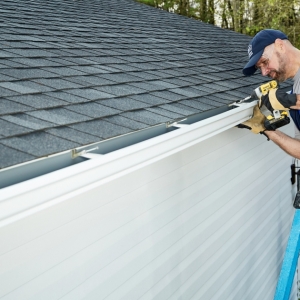A new bathtub can transform your bathroom from a functional space into a personal sanctuary. Whether you're dreaming of a deep soaker tub in your Wellesley Colonial or a sleek, modern alcove tub, the installation process is what separates a dream renovation from a costly nightmare. It might seem straightforward—remove the old tub, put in the new one—but this is where many homeowners, and even some inexperienced contractors, run into trouble. The truth is, bathtub installation is a complex process that blends plumbing, carpentry, and waterproofing expertise. A single misstep can lead to leaks, structural damage, and a finished product that just doesn't feel right. For a successful upgrade, it's crucial to understand the most common pitfalls. Here are the key mistakes to avoid during your bathtub installation Wellesley, MA project.
Mistake #1: Skipping the Critical Measurement and Assessment Phase
The excitement of a new tub can sometimes lead to a rushed start. One of the most frequent and costly errors is failing to measure properly, not just once, but multiple times and in multiple ways.
The Problem: Assuming Standard Sizes Will Fit
You fall in love with a beautiful 60-inch freestanding tub, assuming it will slide right into the space your old one occupied. But when it arrives, you discover it doesn't fit through the bathroom door, the hallway, or up the staircase of your Wellesley home. Or perhaps it fits in the space, but there's no room left for the necessary plumbing connections or access panels. This is a common issue in older Wellesley homes where doorways and stairwells can be narrower than modern standards.
The Solution: The "Three-Measurement" Rule
Before you even shop for a tub, take three critical sets of measurements:
- The Rough-In Space: Measure the exact width and length of the alcove or designated space. Don't forget to measure the diagonal dimensions to ensure a square fit.
- The Access Route: Carefully measure all doorways, hallways, and stairwells the tub must travel through to reach the bathroom. Account for tight turns at the top of the stairs, a common challenge in classic New England home layouts.
- The Plumbing Layout: Note the exact location of the drain and overflow, as well as the water supply lines. Some tubs have pre-configured locations that may not align with your existing plumbing.
A professional installer will always do this, verifying that the new tub is not only the right size for the space but also compatible with your home's existing structure and plumbing.
Mistake #2: Improper Support and Leveling
A bathtub must be perfectly level and solidly supported. When it's not, the consequences are both immediate and long-term.
The Problem: An Unstable or "Bouncy" Tub
If a tub is not properly supported from below, it can flex when you step into it. This "bouncy" feeling is not just unsettling; it places immense stress on the plumbing connections, particularly the drain assembly. Over time, this movement will almost certainly cause the drain to leak. Furthermore, an unlevel tub will never drain correctly. Water will pool at one end, creating a standing water issue that is difficult to clean and can lead to soap scum buildup and surface staining on acrylic or fiberglass tubs.
The Solution: A Mortar Bed and Precision Leveling
For most alcove and drop-in tubs, the manufacturer's instructions call for a mortar bed. This involves pouring a bed of standard mortar mix onto the subfloor and then setting the tub into it. The mortar conforms to the underside of the tub, creating a 100% custom, solid, and unyielding support system that eliminates flex. During this process, the installer must continuously check for level, using shims under the tub's rim if necessary to ensure it is perfectly flat in all directions. This step is non-negotiable for a durable, leak-free installation.
Mistake #3: Inadequate Waterproofing and Sealing
Water is the enemy of your home's structure. A bathroom is a wet environment, and the area around the tub is the first line of defense.
The Problem: Relying on Caulk as a Primary Water Barrier
Many DIYers believe that a thick bead of caulk along the tub and tile joint is sufficient to keep water out. This is a dangerous misconception. Caulk is a sealant, not a waterproofing membrane. If water gets behind the tile and wallboard, it will wick up the wall, rot the studs, and foster mold growth within the wall cavity. This is a particularly insidious problem because the damage is hidden until it becomes severe and expensive to repair.
The Solution: Creating a Comprehensive Waterproofing System
Proper waterproofing happens before the tub is set and the walls are finished. For a tub surround, this means:
- Using the Right Substrate: Cement board, not greenboard or standard drywall, should be used on walls around the tub. Cement board won't disintegrate when wet.
- Applying a Waterproof Membrane: A liquid-applied or sheet-type waterproofing membrane must be installed over the cement board, covering all seams and corners. This creates a continuous, impenetrable barrier.
- Sealing All Penetrations: The areas around the faucet, showerhead, and valve must be meticulously sealed.
- Properly Flashing the Joint: The final bead of high-quality silicone caulk between the tile and the tub is the last line of defense, not the first. Its job is to seal the expansion joint, not to hold back a flood.
Mistake #4: Compromising Drain and Plumbing Connections
The plumbing connections, though hidden from view, are the heart of the tub's functionality.
The Problem: Overtightening and Using Inferior Materials
It seems logical: tighter is better. But with plumbing connections, especially plastic drain assemblies, overtightening is a major risk. It can crack the tub's drain flange or strip the threads, leading to an immediate and significant leak under the tub. Another common error is reusing old, worn-out plumbing components or using putty instead of a rubber gasket (or vice-versa), contrary to the manufacturer's instructions.
The Solution: Methodical Assembly and Leak Testing
A professional follows the tub manufacturer's instructions for the drain assembly to the letter. They use the recommended sealants—whether it's plumber's putty for above the flange or a rubber gasket for below. Connections are hand-tightened and then given a precise quarter- or half-turn with a wrench—no more. Most importantly, they will always perform a leak test by filling the tub with water before the walls are closed in. This allows them to check all drain and overflow connections for any seepage, ensuring everything is watertight before the installation is finalized.
Mistake #5: Underestimating the Project and Going It Alone
Bathtub installation is a deceptively complex project. It requires a diverse skill set that many homeowners don't possess.
The Problem: A Cascade of Unforeseen Issues
A DIY installer might successfully remove the old tub only to find rotted subflooring, outdated plumbing that needs updating, or structural issues that need addressing. Without the experience to handle these common surprises, the project can stall for weeks, leading to a non-functional bathroom and mounting frustration. The finished product may look okay on the surface but harbor hidden flaws that will surface months later.
The Solution: Hiring a Qualified Professional
The most effective way to avoid all these mistakes is to invest in a professional bathtub installation Wellesley, MA expert. A qualified plumber or bathroom contractor brings more than just tools; they bring invaluable experience. They know how to navigate the quirks of Wellesley homes, from slab foundations to historic plumbing systems. They come prepared with the right materials and a problem-solving mindset. They handle the permits and ensure the work meets local building codes, which is crucial for both your safety and your home's resale value.
A new bathtub should be a source of relaxation, not stress. By being aware of these common installation errors—from poor planning and inadequate support to flawed waterproofing—you can make informed decisions about your bathroom renovation. Partnering with a skilled professional ensures your investment is protected, your home is safe from water damage, and your new tub is installed correctly for years of reliable enjoyment.











